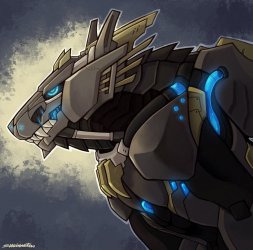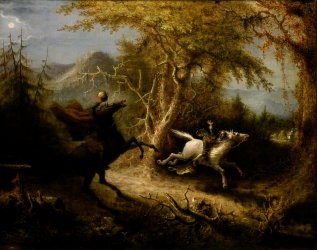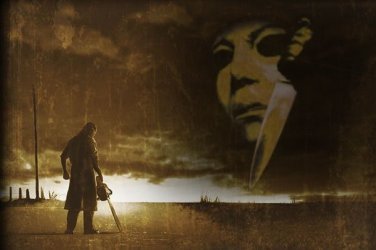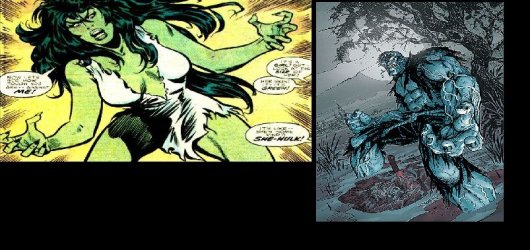Abishai100
VIP Member
- Sep 22, 2013
- 4,967
- 252
- 85
A monster is someone (or something) that impairs our sense of security/stability and can literally hobble our sense of flexibility and sensitivity.
Demons, ghouls, predators, and monsters are popular topics in folk religions and mainstream religions.
When we rent a sensitivity-themed Hollywood (USA) film such as "One Hour Photo" [2002] on Netflix, we might feel entertained about our confidence regarding sensory accounting.
A monster can take such feelings and sense of place away from us and leave us feeling dependent on our environments for emotional/psychological support.
The cult-favourite American horror film franchise The Texas Chainsaw Massacre presents a ghoulish monster named Leatherface, a chainsaw-wielding cannibal who wears a mask made out of the skin of dead people.
Leatherface is arguably the ultimate film-monster, a super-psycho who hobbles his victims' ability to coordinate their bodies to remain flexible and brave.
If life is like a delicate balancing act, then a monster (such as Leatherface) preys on our sensibilities about self-awareness, confidence, and resilience.
Children's folk tales present monsters as affable creatures who challenge humanity's basic assumptions about happiness, normalness, and body-mind coordination. Children enjoy these tales/images, since they foster a sense of curiosity about humanness and imagination.
Christians talk about demons as monsters who devastate a person's faith towards teamwork. These demons/monsters challenge a person's sense of security regarding humiliation, self-organization, and vanity.
If a monster such as Leatherface hobbles our ability to remain safe, then what are the boundaries between psychological order and philosophical chaos?
To understand monsters (and/or monstrosity) we can try to create categories of shock:
1. sexual predator (rapist)
2. non-human predator (shark)
3. political predator (tyrant)
4. perception predator (ghost)
5. mysticism predator (Devil)
6. sanity predator (Leatherface)
Monsters
Leviathan

Demons, ghouls, predators, and monsters are popular topics in folk religions and mainstream religions.
When we rent a sensitivity-themed Hollywood (USA) film such as "One Hour Photo" [2002] on Netflix, we might feel entertained about our confidence regarding sensory accounting.
A monster can take such feelings and sense of place away from us and leave us feeling dependent on our environments for emotional/psychological support.
The cult-favourite American horror film franchise The Texas Chainsaw Massacre presents a ghoulish monster named Leatherface, a chainsaw-wielding cannibal who wears a mask made out of the skin of dead people.
Leatherface is arguably the ultimate film-monster, a super-psycho who hobbles his victims' ability to coordinate their bodies to remain flexible and brave.
If life is like a delicate balancing act, then a monster (such as Leatherface) preys on our sensibilities about self-awareness, confidence, and resilience.
Children's folk tales present monsters as affable creatures who challenge humanity's basic assumptions about happiness, normalness, and body-mind coordination. Children enjoy these tales/images, since they foster a sense of curiosity about humanness and imagination.
Christians talk about demons as monsters who devastate a person's faith towards teamwork. These demons/monsters challenge a person's sense of security regarding humiliation, self-organization, and vanity.
If a monster such as Leatherface hobbles our ability to remain safe, then what are the boundaries between psychological order and philosophical chaos?
To understand monsters (and/or monstrosity) we can try to create categories of shock:
1. sexual predator (rapist)
2. non-human predator (shark)
3. political predator (tyrant)
4. perception predator (ghost)
5. mysticism predator (Devil)
6. sanity predator (Leatherface)
Monsters
Leviathan



